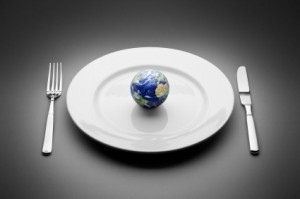
An interesting article came out from the Environmental Working Group came out in October. Please refrain from throwing this column in the garbage right now just because I mentioned EWG, and hear me out.
While EWG has ruffled my feathers more than a few times on ag issues, I found this article to be insightful. The premise of the article was on the topic of feeding the world by that doom day deadline of 2050 when the world population is set to explode and how exactly are we going to feed all those hungry mouths?
While this topic has been the platform for promoting technology in agriculture – think GMOs and precision ag – the EWG article points out American agriculture might be missing the target. How so?
According to the article, only half of 1 percent of U.S. agricultural exports last year went to 19 nations, including Haiti, Yemen and Ethiopia, that the U.N. Food and Agriculture Organization determined had very high or high undernourishment. The value of U.S. food exports to the top 20 wealthy destinations was 158 times the exports to the 19 most seriously undernourished countries.
So… we aren’t feeding those in need really. We are feeding those most like us.
If we want to say we are feeding the world it is likely going to take more than just our food products to do so. It is going to take our knowledge, science and agribusinesses to bring the resources to the people of these underdeveloped countries so they can become better agricultural producers themselves.
Groan. It’s okay, I just did upon typing that sentence, but I still believe in its truth.
Extension services have done this for years, taking overseas trips to help local farmers expand their knowledge. So why not add a coalition of North Dakota cattle ranchers, feedlot operators, and meat lockers who make it their mission to help an African village learn beef production from pasture to plate?
While opening easier trade to these countries would be great – increasing education for small farmers in developing nations – is also a thought to consider as well.
Not your gig? There are other options, too.
Organizations like Samaritan’s Purse and Heifer Internation offer the opportunity to purchase a heifer, pig, goat, ducks, or chickens to help a family that needs to create a source of income through livestock.
In wrapping up, it’s apparent that we are feeding a significant portion of the world, but there is more to be done in the less developed countries. Education, equipment and resources need to be provided to those communities wanting to be sustainable.
And I would venture that there is a lot of political backwater on how to get these countries food and resources that I can’t even fathom to try and understand. Regardless, it’s a topic I wanted to share with you.
– Codi Vallery-Mills
